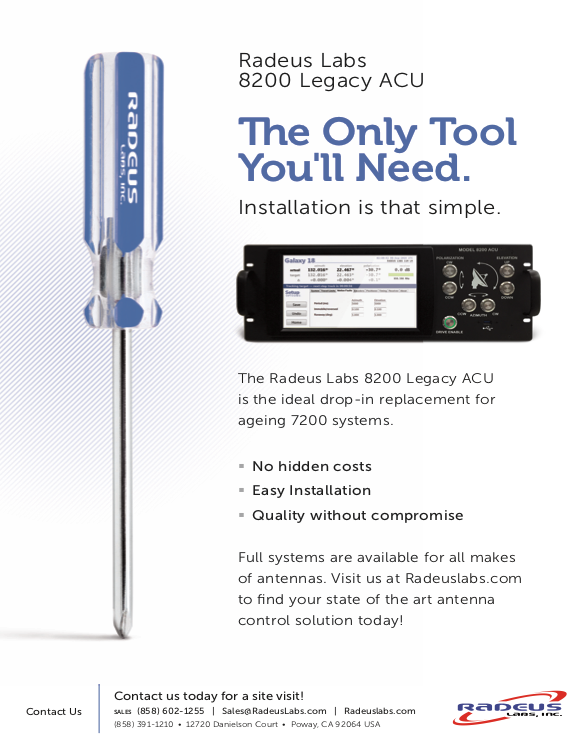The cubesat community has demonstrated global cooperation is possible if we are smart about interoperability. So, how do we replicate and scale up on these outcomes for the smallsat market?

Artistic rendition of Gilmour Space’s G-Sat smallsat on-orbit and their ERIS rocket. Image is courtesy of the company.
Those in the microsat (smallsat) market know that demand for launches in 2023 and into 2024 will far outstrip supply. (A microsat is a satellite with a wet mass of between 10 and 100 kilograms.)
With greater flexibility in launch opportunities, however, there could be more chances to swap out delayed missions, and swap in satellites that are ready to go.
This is an advantage that the cubesat launch market has leveraged for decades. The standardized cubesat form factor enables such missions to be switched at short notice, as the interface to the launch vehicle remains the same.
Another advantage of the cubesat market is the de-facto standardization around a single format for electronics (i.e., the PC-104 format). This has enabled a entire market of cubesat subsystems to develop and grow, with the subsystems from one supplier being largely compatible with the subsystems from another supplier — hence, that all important interoperability.
Thanks to this innate, inter-compatibility of units, the cubesat market has developed into a global and thriving community. Mission integrators can shop for the subsystems most appropriate for their use case and have fast, simple and efficient system level engineering.
Scaling Up
The equivalent community does not exist for the microsat subsystem supply chain across the globe. One stark consequence of this is that new entrant nations find it harder to develop microsat programs as compared to cubesat programs.
New space players will either need to buy in to a turnkey solution (typically locking themselves in to a single mission prime vendor), or be ready to invest in a relatively longer, more expensive development program.
Therefore, It makes sense for the community of microsat builders to develop and agree on their own, top-level form factor standards — where builders can cherry- pick the parts they want to comply with during the smallsat build. In fact, we can already leverage many components as building blocks for this proposed standard.
If one looks at the various microsat solutions on the market, it is clear that they have converged on similar, general design concepts:
• Avionics and platform equipment in a base section and a separate tpayload volume.
• Distinct separation of platform and payload in form and function
• Outer dimension and shape of 400-700mm cubes, with body mounted and deployable panels
• CANbus command and control bus
• S-band TTC and X-band downlink
• 15 inch sep ring, designed for the lateral loads experienced when mounted on a cantilever launch slot on a rideshare mission
• 3-axis stabilized modular attitude control system
The above list could describe several different, commercially available microsatellite products from the U.S., Europe, and even Gilmour Space’s own G-Sat platform.
Form Factor Convergence
The launch rideshare market is also converging on a form factor. Ariane 6 and SpaceX rideshare slots for a full HUB slot (A6) or half a panel (F9) are similar in size and shape and suitable for a 700mm cuboid microsatellite, along with the available volume in a number of small launchers (including Eris, Gilmour Space’s launch vehicle).
This phenomenon — similar in concept to evolutionary convergence — could be harnessed for further benefit if consolidated in a supplier-agnostic Microsatellite NewSpace Standard. If everyone were to interface to the launch vehicle in the same manner, launch availability becomes more liquid — as the cubesat market has aptly demonstrated. If everyone works to the same subsystem electrical interfaces, the supply chain can more efficiently innovate and compete on a level playing field. If everyone works to the same electrical interfaces, mission integrators are more resilient to supply chain interruptions. If everyone works to the same platform / payload interfaces, payload developers can focus more on their sensors and less on the overhead engineering.
With the continuing downward trend of launch costs, the number of smallsat missions in planning or in build is increasing.

Now is the perfect time to work together to develop a set of standards (or adopt and cherry pick existing ones) to everyone’s advantage.
Throughout 2023, Gilmour Space will be running a series of workshops to develop the first draft of a Microsatellite NewSpace Standard and we invite you to join us. Reach out to us at info@gspacetech.com.
www.gspacetech.com

Shaun Kenyon
Author Shaun Kenyon is the Satellite Program Manager at Gilmour Space Technologies, Australia’s leading manufacturer of launch vehicles and satellite platforms. With more than 15 years of space engineering experience across Europe, Shaun has built a number of small satellites for commercial, institutional and government missions. Today, he leads a team of engineers in Gold Coast, QLD, to design and build Australia’s first team of engineers in Gold sovereign 100kg satellite.


